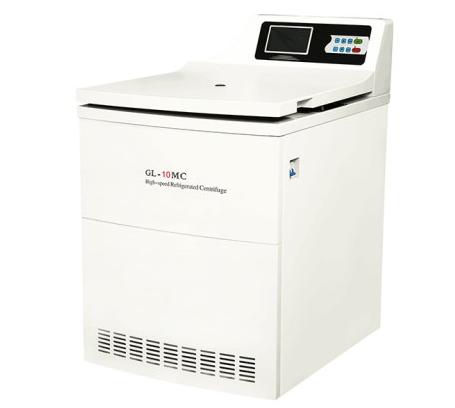Sample preparation is a fundamental component of genomics research, and careful treatment of biological samples is critical for getting accurate and trustworthy genomic data. This procedure relies heavily on centrifugation, a technique that uses centrifugal force to separate components in a sample. As genomics research advances, the necessity for optimized sample preparation techniques using centrifuges has never been more crucial. This article explores the advancements and best practices in sample preparation for genomics, focusing on the strategic use of centrifuges to achieve precision and efficiency.
The Role of Centrifuges in Genomic Sample Preparation
Centrifugation is a cornerstone technique in genomics, serving a variety of functions. Centrifuges use centrifugal force to separate particles based on their density, resulting in the creation of discrete layers inside the sample.

| Aspect | Description | Benefits |
| DNA/RNA Extraction | Separates DNA/RNA from cellular components through differential centrifugation.Enables efficient isolation of genetic material. | High purity DNA/RNA extraction.Improved downstream applications. |
| Cell Lysis | Breaks open cell membranes to release cellular contents. Centrifugation separates cellular debris from lysate. | Enhanced efficiency in cell lysis.Reduction of unwanted cellular material. |
| Density Gradient Centrifugation | Separates nucleic acids based on density differences in a gradient medium.Used for purification and fractionation. | Highly pure separation of nucleic acids. Facilitates analysis and quantification. |
| Gel Filtration Centrifugation | Separates DNA/RNA molecules based on size through a column matrix.Fractionates molecules by their ability to pass through the matrix. | Size-based separation for precise analysis.Removal of unwanted impurities. |

The Advancements and Best Practices in Sample Preparation for Genomics Using Centrifuges
1. Adaptive Rotor Designs
Modern centrifuges use variable rotor designs to meet the different needs of genomics researchers. These rotors can accommodate a wide range of sample volumes and kinds, allowing numerous samples to be processed at once. The adaptability of rotor designs increases centrifuge versatility, making them appropriate for a wide range of applications, including DNA/RNA extraction and cellular component isolation.
2. High-Speed Centrifugation for Rapid Processing
In the era of high-throughput genomics, speed is critical. High-speed centrifugation is now possible because of advances in centrifuge technology, lowering the time required for sample processing significantly. This acceleration is especially useful in genomics applications requiring short turnaround times, such as next-generation sequencing procedures.

Sample Preparation for Analytical Techniques
| Analytical Technique | Description | Benefits |
| 1. Mass Spectrometry (MS) | High-speed centrifugation used for quick sample preparation in MS-based proteomics. Efficient removal of contaminants and unwanted particles. | Accelerated sample preparation for MS analysis.Enhanced data accuracy. |
| 2. Polymerase Chain Reaction (PCR) | Rapid separation of reaction components using high-speed centrifugation in PCR workflows.Speeds up PCR cycle times. | Reduced PCR reaction times.Improved PCR efficiency. |
3. Automation in Centrifugation Systems
The integration of automation into centrifugation systems has revolutionized sample preparation workflows. Automated centrifuges not only enhance throughput but also minimize variability and errors associated with manual handling. Researchers can program these systems to follow predefined protocols, ensuring standardized and reproducible sample preparation processes.
4. Low-Noise Technologies for Sensitive Genomic Applications
Sensitive genomic applications, such as single-cell sequencing and low-input DNA/RNA studies, demand gentle sample handling. Centrifuges with low-noise technologies minimize disturbances during centrifugation, preserving the integrity of nucleic acids and proteins. This is crucial for obtaining reliable results in experiments where sample quality is paramount.
5. Temperature Control Features
Temperature changes have an impact on genomic materials, particularly nucleic acids. Modern centrifuges include precise temperature control features, allowing researchers to maintain optimal temperatures during centrifugation. Temperature-controlled centrifugation ensures the stability of genomic samples and reduces the risk of degradation.
6. Optimized Tube and Rotor Configurations
Centrifuge tube and rotor layouts directly affect sample recovery rates and overall efficiency. Centrifuge design advances have included the development of specific tube and rotor configurations for genomics applications. These arrangements reduce sample loss, improve recovery rates, and are compatible with subsequent genetic analysis.
7. Documentation and Quality Control
Documentation and quality control are critical components of genomics sample preparation best practices. Researchers should keep accurate data on centrifugation parameters such as rotor type, speed, and duration. Regular quality control procedures, such as monitoring sedimentation patterns and verifying sample purity, help to ensure the trustworthiness of genetic data.

Conclusion
The dynamic landscape of genomics research requires a continuous evolution in sample preparation techniques, and centrifugation remains at the forefront of these developments. By adhering to best practices and leveraging the latest advancements in centrifuge technology, genomics researchers can elevate the accuracy and efficiency of their sample preparation processes, ultimately advancing our understanding of the genetic code and its implications for various fields, including medicine and biotechnology.









